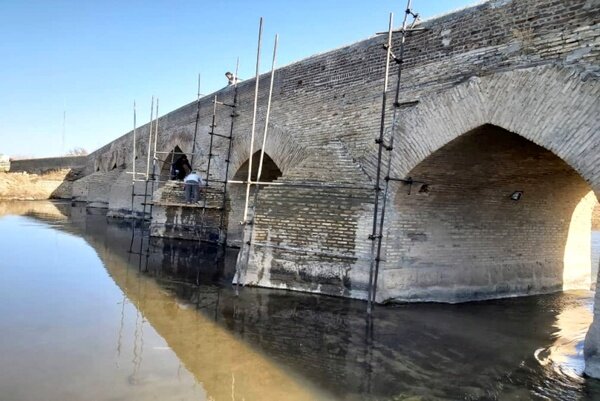Flood-hit historical bridge in Lorestan restored

TEHRAN – A restoration project has recently been completed on Chalanchulan Bridge, an arch brick monument located in the western Iranian province of Lorestan.
The Qajar-era (1789-1925) bridge had suffered damage from heavy flooding in 2019 so it needed some rehabilitation works to be preserved for future generations, the provincial tourism chief said on Sunday.
A budget of 400 million rials ($9,500 at the official exchange rate of 42,000 rials per dollar) was allocated to the project, Seyyed Amin Qasemi explained.
With 120 meters long, Chalanchulan Bridge was built on the remains of an ancient structure dating back to the Sassanid-era (224 CE to 651). It has six brick arches and its columns are made of stone and brick. The structure was inscribed on the National Heritage list in 1997.
There are over 100 historical bridges across the province that should be carefully protected as they are architectural specimens of different historical eras and they are part of the identity of the region, the official added.
In 2019, days of devastating flooding and heavy rain inflicted damage to tens of cultural heritage sites in Lorestan; for instance, it washed away parts of a historic hill, on top of which the famed Falak-ol-Aflak Castle is nested.
Lorestan, which is a region of raw beauty, was inhabited by Iranian Indo-European peoples, including the Medes, c. 1000 BC. Cimmerians and Scythians intermittently ruled the region from about 700 to 625 BC. The Luristan Bronzes noted for their eclectic array of Assyrian, Babylonian, and Iranian artistic motifs, date from this turbulent period.
Lorestan was incorporated into the growing Achaemenid Empire in about 540 BC and successively was part of the Seleucid, Parthian, and Sassanid dynasties.
ABU/AFM

Leave a Comment